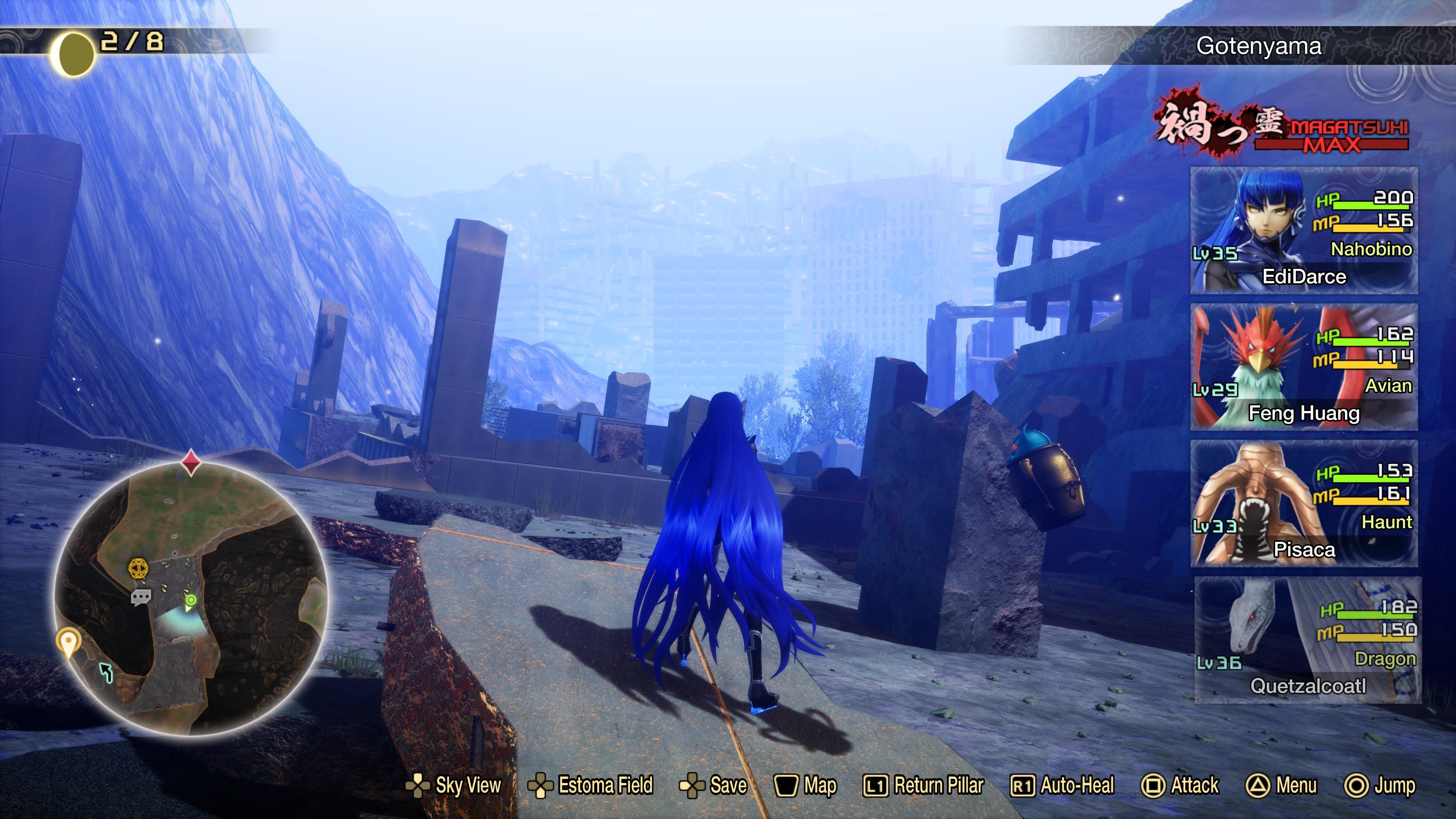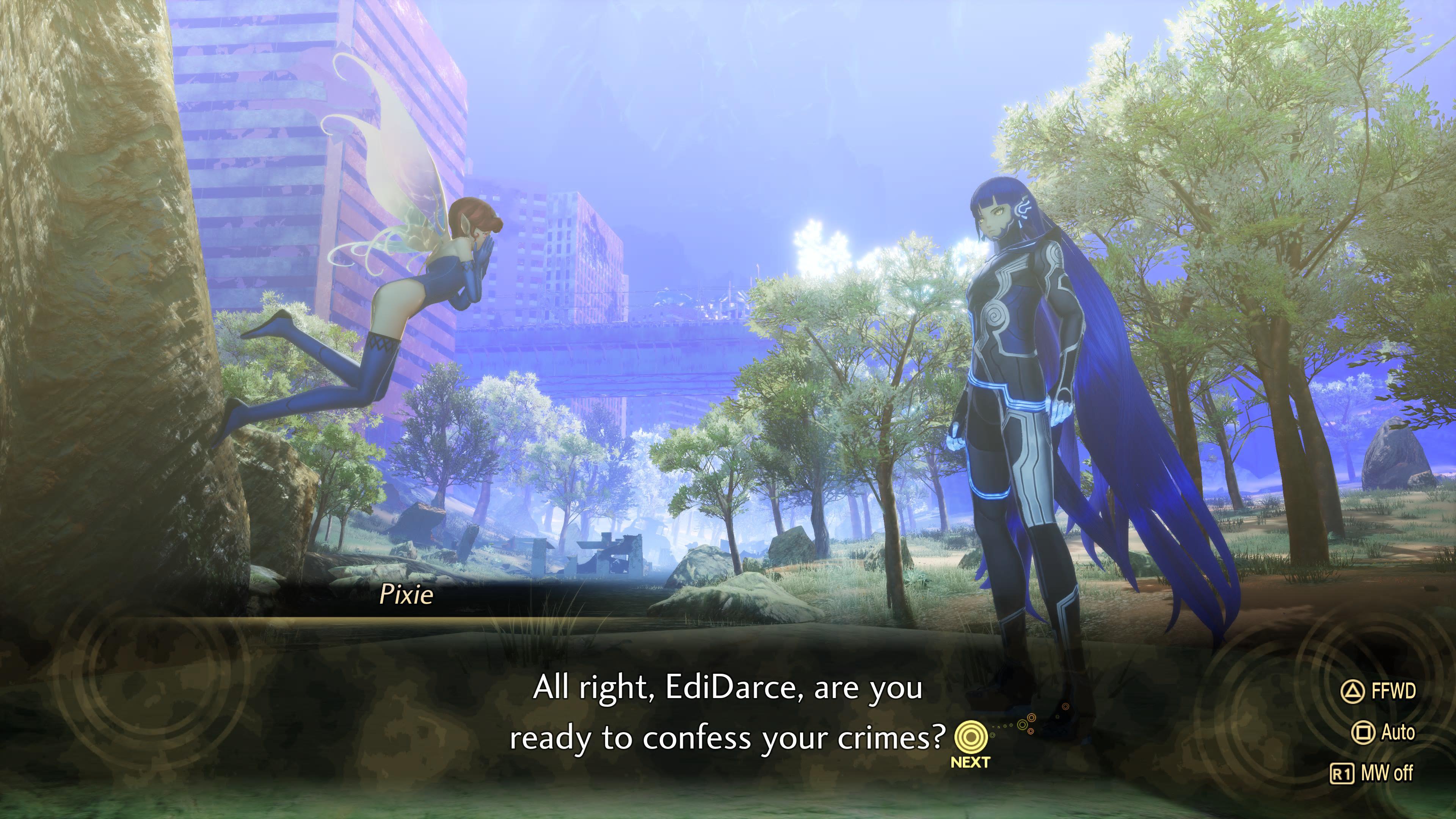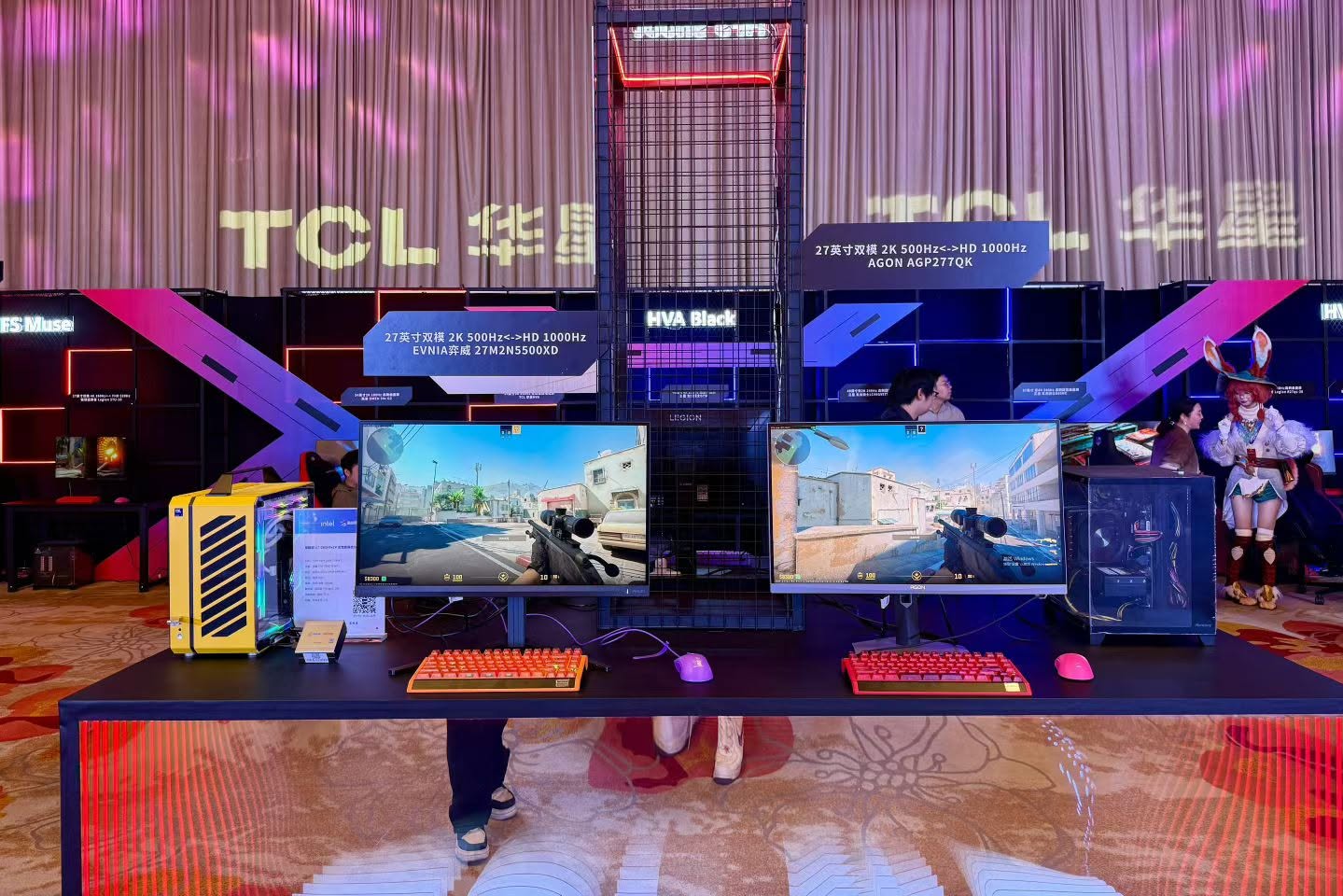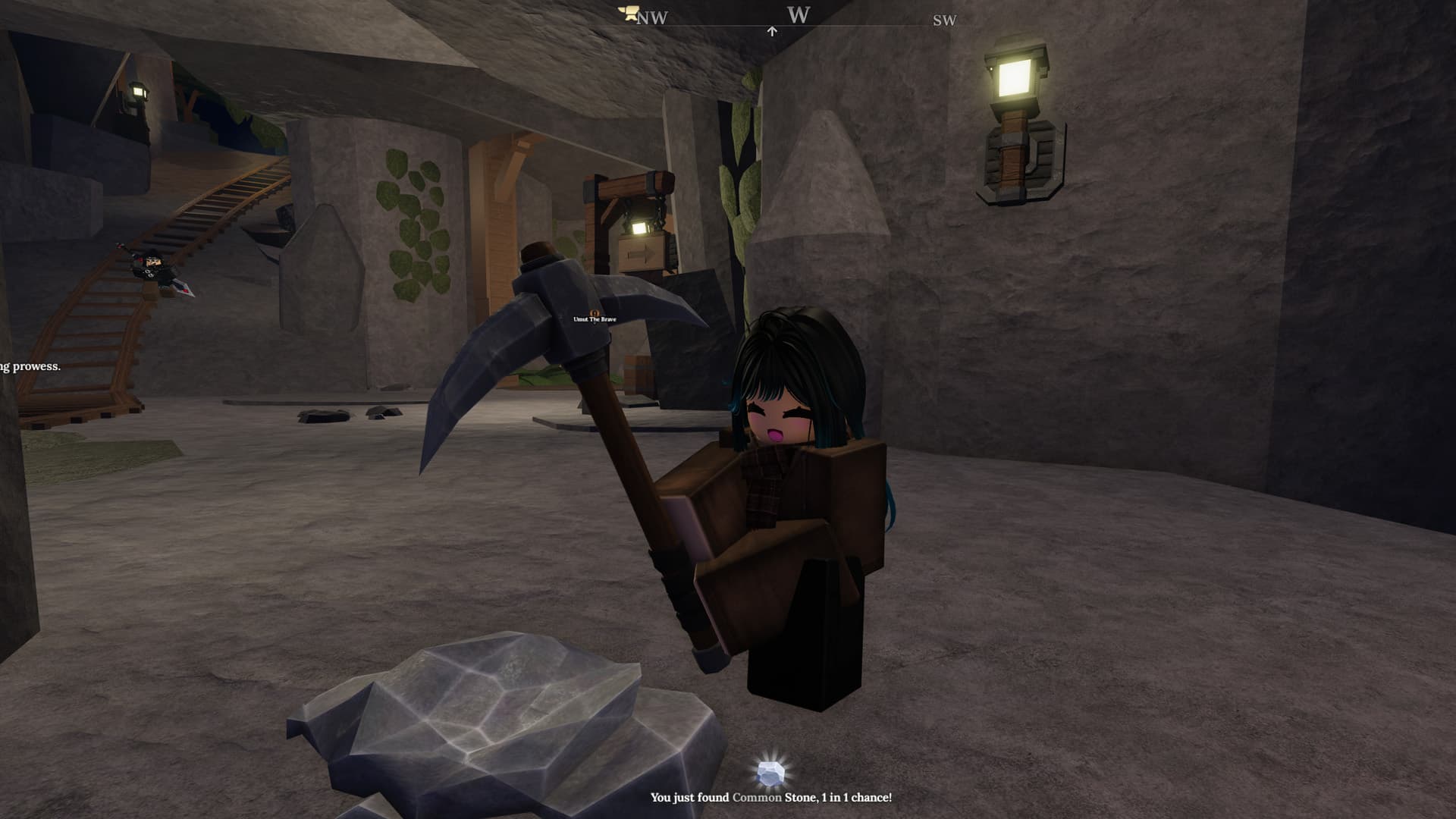Sorry Metaphor, but after playing 300 hours worth of Atlus RPGs in 2024, Shin Megami Tensei 5: Vengeance is my favorite

Personal Pick
In addition to our main Game of the Year Awards 2024, each member of the PC Gamer team is shining a spotlight on a game they loved this year. We’ll post new personal picks, alongside our main awards, throughout the rest of the month.
This year I played three 100-hour Atlus RPGs and I’m alive to sheepishly admit it (but only just). The first was Persona 3 Reload, the last was Metaphor: ReFantazio, and wedged in the middle was Shin Megami Tensei 5 Vengeance, which was easily my favorite. It’s more tonally askew than the Persona games, more psychedelically bleak, and while I didn’t really absorb the story enough to recount it now, its landscapes have left their mark on me.
I was compelled to play SMT 5 straight after Persona 3 Reload because a) on paper it’s comparatively simple and b) because it was an Atlus RPG and I couldn’t stomach anything else. My favourite thing about Persona is the combat and that’s basically all SMT 5 is. There is no time-consuming, FOMO-inducing social link stuff to grapple with, and no laborious daytime routines or calendars to stress over: it’s fundamentally a combat-first JRPG with creature collecting (and of course, the occasional interminable dialogue sequence, but you can skip them). The rhythm is simple and rewarding: explore big open maps, collect new monsters and deities, and pit them against foes in tactical turn-based battles. What you’re doing in the opening hours of SMT 5, you’re still basically doing 60 hours later.
Shin Megami Tensei loyalists are always eager to remind Persona fans that the latter is an offshoot of the former. They’re also wont to point out that Shin Megami Tensei’s monster collecting predates Pokémon. But I think it’s reasonable to describe Shin Megami Tensei as “Persona, but Pokémon”, just as it’s reasonable to describe Metaphor ReFantazio as “Persona, but fantasy”, because that will make sense to people who never encountered Megaten before Persona 5 launched it into the mainstream western consciousness. It still vastly undersells exactly what SMT is though, because that is near inarticulable when taking into account its minor flourishes.
Shin Megami Tensei 5 felt revelatory to me, even though fans (whether of Atlus games or JRPGs more broadly) seem split on whether it’s “great” or just disappointingly “good”. The most gripping element is, of course, Atlus’ Press Turn combat system, which demands a careful and tactical playstyle. It’s fundamentally a process of attacking with the right monsters equipped with the right elemental powers, but the way this set-up gradually blossoms into something akin to chess makes the combat in, say, Final Fantasy VII Rebirth, feel hopelessly imprecise and inelegant. Unless you’re over-levelled (and for situations like that there’s a lightning quick auto-battle mode) it’s nearly impossible to brute force through a SMT encounter.
It’s a great game then, but what I love about SMT 5 has barely anything to do with what I do on a moment-to-moment basis with my hands. SMT 5 is set in the sandbanked ruins of a future Tokyo. It’s not a graphically impressive game, and that’s made all the more obvious due to its lack of Persona’s overblown UI flair. Despite being set in a destroyed re-imagining of a real place, the handful of open world maps in SMT 5 feel more like videogame spaces than most contemporary JRPGs. Big golden collectibles are spread across sand plains and skyscraper corpses, and baddies roam aimlessly in big, dumb packs. It was originally designed for Nintendo Switch, and you can sense while playing it that everything about the game—the level design, the stripped-back UI—was designed with handhelds in mind.
It may not be “impressive” graphically, but boy does SMT 5 have atmosphere, and yet, not the kind of atmosphere you expect from a post-apocalyptic videogame designed for millions of players. Usually “post-apocalyptic” implies some sense of vanquished grandeur. There’s usually an inherent melancholy only dispelled by the brutality and doggedness (or zaniness) of the survivors we meet. But you don’t meet survivors in SMT 5’s fallen Tokyo; there are no survival stories, no attempts to “humanize” the devastation or orientate it with our real life experiences. SMT 5 strikes a distinctly strange tone, one that’s sickly and faintly oppressive, but also dream-like.
The protagonist Nahobino doesn’t suffer fall damage and can glide down hills at graceful high speeds. Glowing red columns shuttle Nahobino high above the map, revealing the limits of the land and their artificial “open dungeon” layouts. The movement in SMT 5 is surprisingly lightfooted and balletic but it doesn’t need to be this way, from a gameplay perspective. Light platforming is sometimes required but it never demands full use of the mobile fluidity Nabohino enjoys. Instead, the movement contributes to the deliberate unreality of these sparsely detailed 3D worlds; it’s hard to account for otherwise.
Sound is a huge factor too. The sound design is weirdly enclosed, making no effort to evoke open spaces. When Nabohino’s first fairy companion Amanozako shouts “Hey! Hey!” to alert of a nearby buried treasure, her voice is drenched in an off-kilter reverb quite at odds with the wide open areas I’m exploring. Her stock standard JRPG whimsy gains an awkward kind of menace. Meanwhile, a shift in the moon cycle elicits a lurching ascending drone that sounds like a corrupted take on Ocarina of Time’s discovery chime, broadcast from a seastuck vessel. Below all this, a faintly industrial soundtrack ticks away in the background, sounding more like something from an obscure ‘90s German industrial compilation than anything else I’ve heard in a mass market videogame. Even the rest area music, which sounds at first jarringly chintzy, acquires a chilling dimension over the course of SMT 5’s 80 hours.
This is not a game concerned with trying to create “real, living” spaces. Disorientation seems key. Playing SMT 5 puts me in a weird, receptive edge-of-sleep mindspace, and there’s something verging horror in this. Not in the tense, nail-biting mould of blockbuster horror, nor in the psychologically discomforting sense we might associate with something like Silent Hill or Soma. SMT’s is a slightly off surrealist horror. It’s never scary—it often tries to be cartoonishly funny—but there is something latently skewed about it. Nothing feels real, nothing is meant to feel real. It’s a sense of the uncanny that modern indie horror developers have nailed over the last couple of years, mainly thanks to their implementation of early 3D graphical shortcomings. Similarly, when you look at more categorically vague modern indies like Liminal Void, or Psychopomp, or even Cruelty Squad, with their deliberately garish art styles that lean wholeheartedly into digital artifice, it’s hard not to see SMT’s fingerprints all over them.
When I think about it, that “antiquated 3D” vibe is a quality that most modern Atlus JRPGs share in a more subtle way, even Metaphor: ReFantazio. Look past the loud UI and gorgeous townships—which seem to borrow from Yugoslavian modernist architecture and monuments to striking effect—and Metaphor is a weirdly flat-looking game. Foliage is static and flaky. Distant hills clearly hide nothing beyond them but a blank horizon of unfilled map space. Out in the open field areas, Atlus makes little effort to make their game worlds look like real worlds. I can only assume this is deliberate: despite the social “simulation” aspects in Metaphor and Persona you are not meant to be carried off into an approximation of any real world in Atlus games. Instead, via a number of unusual rubbings together, they feel like waking dreams. SMT 5 is that principle boiled down to its essence. SMT is, after all, the essence of all of its offshoots: it’s the “purest” form of this brilliant studio’s distinctive vision.
By now it’s a cliché verging moronic to describe Shin Megami Tensei—or Persona games—as “weird”, but leaving aside that broad preconception, I can’t think of another studio whose games give me such an idiosyncratic sensory rush. In 2025, I’m going to play through all three of the Etrian Odyssey games I just bought during the Steam Winter Sale. I doubt they’ll shift my tastes quite as much as SMT did, but if there’s one great thing about loving games right now, it’s that we have a stupid abundance of choice and a dizzying wealth of deep cuts to explore, and there’s always a new epiphany just around the corner.
Overall, Shin Megami Tensei V illuminated, for me, a seeming consistency in Atlus’ meaty RPGs that I might not have otherwise noticed, and which I’ve come to yearn for in other games: an unashamed willingness to embrace the strange beauty of unreal videogame spaces. In Persona, our teenage heroes temporarily escape the familiar backdrops of high schools and shopping malls to enter bizarre, illogical, labyrinthine spaces. In Shin Megami Tensei, illogical labyrinthine space is all there is.






